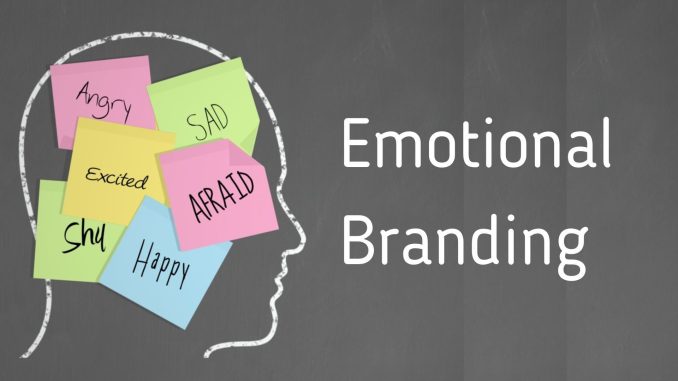
Brand loyalty is often discussed in terms of repeat purchases, customer retention, and lifetime value. But beneath those metrics lies something more enduring and less tangible: emotion. The emotional architecture of brand loyalty is what truly holds the relationship together. It’s the invisible framework that shapes how people feel about a brand, why they return to it, and how deeply they connect with its identity. Understanding and designing for that emotional structure is what separates transactional brands from beloved ones.
At the foundation of emotional loyalty is trust. Trust isn’t built overnight—it’s earned through consistency, transparency, and care. When a brand delivers on its promises, communicates honestly, and treats people with respect, it begins to form a reliable emotional bond. Customers start to feel safe, and that safety becomes the basis for deeper engagement. Trust is not just about product quality or service reliability—it’s about emotional reliability. It’s the feeling that a brand won’t let you down.
Familiarity plays a crucial role in emotional architecture. People are drawn to what feels known and comfortable. When a brand maintains a consistent tone, visual identity, and experience across touchpoints, it creates a sense of emotional continuity. That familiarity breeds affection. It’s why people gravitate toward the same coffee shop, the same clothing label, or the same tech brand—they know what to expect, and that expectation feels good. Familiarity isn’t boring; it’s reassuring.
Empathy is another pillar. Brands that understand and reflect the emotions of their customers build stronger connections. This means listening deeply, responding thoughtfully, and designing experiences that feel personal. When a brand shows that it gets you—your frustrations, your aspirations, your values—it becomes more than a provider. It becomes a partner. Empathy turns a brand into a mirror, reflecting the emotional landscape of its audience and making them feel understood.
Storytelling adds emotional depth. People don’t just remember facts—they remember stories. When a brand shares its journey, its purpose, and its people, it invites customers into a narrative. That narrative becomes part of the customer’s own story. It’s not just about what the brand sells—it’s about what it stands for. Stories create emotional resonance, and that resonance builds loyalty. Customers begin to feel like they’re part of something meaningful.
Rituals reinforce emotional connection. These are the small, repeatable moments that become part of the brand experience. It could be the way a product is packaged, the tone of a welcome email, or the rhythm of a loyalty program. Rituals create emotional rhythm. They make the brand feel alive and familiar. Over time, these moments become part of the customer’s routine, and that routine becomes a relationship.
Surprise and delight can strengthen emotional bonds. Unexpected gestures—a handwritten note, a thoughtful upgrade, a personalized recommendation—show that the brand sees the customer as more than a transaction. These moments don’t have to be grand; they just have to be sincere. When a brand goes beyond what’s expected, it creates emotional elevation. Customers feel special, and that feeling sticks.
Belonging is a powerful emotional driver. People want to be part of something. When a brand fosters community, invites participation, and celebrates its customers, it creates a sense of inclusion. This could be through social media engagement, user-generated content, or shared values. When customers feel like they belong, they become advocates. They don’t just buy—they share, defend, and promote. Belonging turns loyalty into identity.
Emotional architecture also includes vulnerability. Brands that admit mistakes, show humility, and respond with grace build deeper trust. Perfection isn’t relatable—honesty is. When a brand owns its flaws and commits to improvement, it shows emotional maturity. Customers appreciate that kind of transparency. It makes the brand feel human, and humans connect with other humans.
Consistency across time is essential. Emotional loyalty isn’t built in a single campaign—it’s built over years of thoughtful engagement. That means staying true to values, maintaining quality, and evolving with integrity. Brands that change too abruptly or abandon their emotional foundation risk alienating loyal customers. Growth is important, but it should be emotionally coherent. Customers need to feel that the brand they loved yesterday is still the one they love today.
Design plays a subtle but significant role. The look and feel of a brand—its colors, typography, layout, and imagery—communicate emotion. When design aligns with the brand’s emotional identity, it reinforces the connection. A calming palette, a friendly font, or a welcoming interface can all contribute to how a customer feels. Design isn’t just visual—it’s emotional architecture in form.
Leadership influences emotional loyalty more than many realize. The values, tone, and behavior of a company’s leaders shape the brand’s emotional climate. When leaders are visible, authentic, and emotionally intelligent, they set a standard for the entire organization. That standard filters down into customer interactions, brand messaging, and cultural norms. Leadership that prioritizes emotional connection builds brands that people trust and love.
Technology should support emotional architecture, not undermine it. Automation, personalization, and data can enhance connection when used thoughtfully. But when technology feels cold, intrusive, or impersonal, it erodes trust. The goal is to use tech to amplify human warmth, not replace it. Emotional loyalty thrives when digital experiences feel intuitive, respectful, and emotionally intelligent.
Ultimately, brand loyalty is not just about retention—it’s about relationship. It’s about how people feel when they think about your brand, talk about it, and engage with it. The emotional architecture that supports that relationship must be intentional, consistent, and deeply human. When businesses design with emotion in mind, they don’t just build brands—they build bonds. And those bonds are what turn customers into lifelong advocates.